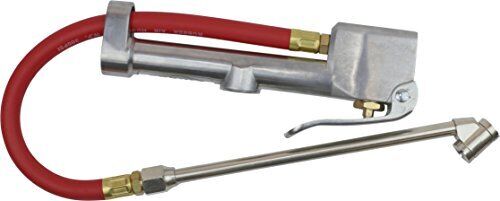-40%
H.P.II 20AC UNPATENTED PLACER MINING CLAIM STEEPHOLLOW CREEK NEVADA COUNTY CA
$ 1848
- Description
- Size Guide
Description
H.P.II 20AC UNPATENTED PLACER MINING CLAIM STEEPHOLLOW CREEK NEVADA COUNTY CALIFORNIAAnother absolutely amazing hidden gem brought to you by the guys at Brodec Location Services!
Vehicle access is limited to this location and REQUIRES MANDATORY 4WHEEL DRIVE as this one is far from the beaten path. There are several ways to enter this area but it is NOT a claim for trailers, RV'S or lower clearance "off road capable" vehicles. Foot access is easy with parking at the PG&E gate on Chicago Park Powerhouse Road. From the parking it is virtually level ground and approximately half a mile (.5mi) to the claim. Once you are here, you are really going to feel how alone these remote areas can be! Aside the occasionally neighboring claimaints or one of a couple private land owners you're likely to see only the abundant wildlife commonly found here.
With thousands upon thousands of yards of mineable materials this area is one of those claims you can mine for generations to come. These gravels are far from exhausting and gold is easy to pan straight from the creek or banks. With potential for limitless types of prospecting this region is a dredgers dream. Plenty of water year round, an abundance of material and nobody in sight. As always, check all your local, state and federal regulations before deciding which avenue of mining is best for you...
This claim offers several flat camping areas with room for staging of large groups and can potentially be accessed via historic mining roads still fully functional. Access must be negotiated by any future claimaint with PG&E and permissions to pass granted by them.
An active plan of operations could potentially grant owners full access allowing improvements to accommodate trailers. That filing would be a requirement of the new claim owners and is not guaranteed to grant access.
Call or message us today for your appointment to view this or one of our other Northern California locations. Based in Nevada County with properties in Placer, Sierra, Yuba, Butte, as well as Nevada County we try and offer "something for eveyone" so please don't hesitate to contact us with your dream claim's criteria!
If you are local and want to discuss terms, transfer or just have some mining related questions stop on in and see us at the office we are either here or in the field.
Brodec Location Services
17311 Penn Valley Drive Penn Valley Ca 95946
*Disclaimer*
Here at Brodec Location Services we strongly recommend you are versed in all Federal, local & state laws as well as research the area you intend to purchase a claim. Some of these areas are very remote as well, some are subject to sever weather conditions & road closures. Please note: All of our claims are recorded with the Bureau of Land Management as well as any & all local clerk recorders. All claims are paid through the current mining year & transfers will include a copy of the original location notice. All claims will be transferred the day of sale via "Quit Claim Deed" releasing 100% of Brodec's interest to the purchaser. You are making an investment in your future through the purchase of this "real property" & we urge you make your decision based off verifiable data.
We appreciate your loyalty. To all of our clients thank you!
Heavy pans, the sun upon your back.
Some of the very abundant history found online:
Type:
GeologyComment: Tertiary Channel Gravels It has been estimated that 40 percent of California's gold production has come from placer deposits along the western Sierra Nevada (Clark, 1966). These placer deposits are divisible into Tertiary deposits preserved on the interstream ridges, and Quaternary deposits associated with present streams. Lindgren (1911) estimated that approximately 7 million (at .00/oz.) was produced from the Tertiary gravels. Almost all Tertiary gravel deposits can be divided into coarse basal Eocene gravels resting on basement, and overlying upper or "intervolcanic" gravels. While the gravels differ texturally, compositionally, and in gold values, no distinct contact exists between the two. The boundary is usually placed where pebble and cobble beds are succeeded by overlying pebble, sand, and clay beds. Lower gravels contain most of the gold and rest on eroded bedrock that is usually smooth, grooved, and polished. Where bedrock is granitic, it is characterized by a smooth and polished surface. Where bedrock is slate, phyllite, or similar metamorphic rock, rock cleavage, joints, and fractures acted as natural riffles to trap fine to coarse gold. In many cases, miners would excavate several feet into bedrock to recover the trapped gold. The lower gravels, or "blue lead," of the early miners are well-cemented and characterized by cobbles to boulders of bluish gray - black slates and phyllites, weathered igneous rocks and quartz. Boulders may range upwards of 10 feet in diameter. In many deposits, disseminated pyrite and pyritic pebble coatings are common in the lower blue lead gravels. Adjacent to the bedrock channels, broad gently sloping benches received shallow but extensive accumulations of auriferous overbank gravels sometimes 1-2 miles wide. The lower unit is also compositionally immature relative to the upper gravel unit as evidenced by their heavy mineral suites. Chlorite, amphibole, and epidote are common constituents in the basal gravels, but are conspicuously absent in upper gravels. The upper gravels compose the bulk of most deposits, with a maximum measured thickness of 400 feet in the North Columbia District. These gravels carry much lower gold values (rarely more than a few cents per cubic yard) than the deeper sands and are often barren. Upper gravels are finer grained, with clasts seldom larger than cobble size, and contain abundant silt and clay interbeds. Cross-bedding and cut-and-fill sedimentary structures are abundant as well as pronounced bedding and relatively fair to good sorting. Compositionally they are much more mature, with quartz prevailing, and more stable heavy mineral components consisting almost exclusively of zircon, illmenite, and magnetite. Oxidation is common and often imparts a reddish hue to the gravels. During the Cretaceous, the Sierra Nevada was eroded and its sediments transported westward by river systems to a Cretaceous marine basin. By the Eocene, low gradients and a high sediment load allowed the valleys to accumulate thick gravel deposits as the drainages meandered over flood plains up to several miles wide developed on the bedrock surface. The major rivers were similar in location, direction of flow, and drainage area to the modern Yuba, American, Mokelumne, Calaveras, Stanislaus, and Tuolumne Rivers. Their auriferous gravels deposits are scattered throughout a belt 40 - 50 miles wide and 150 miles long from Plumas County to Tuolumne County. In the northern counties, continuous lengths of the channels can be traced for as much as 10 miles with interpolated lengths of over 30 miles. The ancient Yuba River was the largest and trended southwest from headwaters in Plumas County. Its gravels are responsible for the placer deposits in the North Bloomfield, San Juan Ridge/North Columbia, Moore's Flat, and French Corral districts. Tributaries to the ancestral Yuba River were responsible for most of the other auriferous gravels in Nevada County.Comment Type:
WorkingsComment: Hydraulic mining methods were first applied in 1852 to the Yankee Jims gravels in the Forest Hill District of central Placer County. Its use and methods quickly evolved to where it was applied to most exposed Tertiary gravel deposits. Hydraulic mining involved directing a powerful stream of high pressure water through large nozzles (called "monitors") at the base of a gravel bank, undercutting it and allowing it to collapse. The loosened gravels were then washed through sluice boxes. The remaining tailings were indiscriminately dumped in the nearest available stream or river. Large banks of low-yield gravel could be economically mined this way. In some cases, adits were driven into the exposed face and loaded with explosives to help break down the exposure. One of hydraulic mining's highest costs was in the ditches, flumes, and reservoirs needed to supply sufficient volumes of water at high pressure. A mine might have many miles of ditches as well as dams and reservoirs, flumes, and tunnels. Hydraulic mining flourished for about 30 years until the mid-1880s when the Sawyer Decision essentially brought it to a halt.Comment Type:
DepositComment: The district contains several separate hydraulic workings, which include Christmas Hill and Little York diggings at the south end of the district, the Red Dog and You Bet diggings farther north, and several smaller unnamed deposits. Because of extensive erosion of the Valley Springs and Mehrten formations, the You Bet and neighboring districts were known for their immense bodies of exposed auriferous gravel. The district produced from extensive auriferous channel gravels deposited by a tributary to the Tertiary Yuba River. This tributary flowed northward through the neighboring Gold Run and Dutch Flat districts before turning sharply southwest, then resuming its northerly flow through the You Bet - Red Dog district where it was mined at the Christmas Hill, Little York, Red Dog and You Bet diggings. Pebble imbrications and cross-bedding in the gravels at Gold Run and Little York demonstrate the northward flow. The Eocene gravels at the You Bet District reach widths of more than one mile and extend in discontinuous deposits for 3-4 miles in a north-south direction. They achieve a maximum thickness of almost 400 feet and can be divided into lithologically and texturally distinct units. The lower unit, or blue lead of the early miners, is the richest. It is generally 30-40 feet thick and rests directly on bedrock within a well-defined bedrock channel. It is generally confined to the channel troughs and seldom exposed, having been buried under thick sections of upper gravel. The lower gravels are generally immature and composed of bluish-black slate and phyllite cobbles and coarse gravel derived from the Calaveras Complex, weathered igneous rock clasts, and quartz. Large boulders are uncommon. Lower gravels are generally well-cemented. The most important lower gravels were in the bedrock channel at You Bet and Little York. The upper gravels form the majority of the Eocene gravel deposits. Their thickness varies significantly within the district, but reaches a maximum of about 350 feet. These gravels are much finer, with clasts seldom larger than pebble size. They contain abundant quartz sand with silt and clay interbeds. Upper gravels are mature with a heavy-mineral content consisting of zircon, ilmenite, and magnetite.Comment Type:
GeologyComment: REGIONAL SETTING The northern Sierra Nevada is home to numerous important gold deposits. These include the famous lode districts of Johnsville, Alleghany, Sierra City, Grass Valley, and Nevada City as well as the famous placer districts of North Bloomfield, North Columbia, Cherokee, Foresthill, Michigan Bluff, Gold Run, and Dutch Flat. The geological and historical diversity of most of these deposits and specific mine operations are covered in numerous publications produced over the years by the U.S. Bureau of Mines, U.S. Geological Survey, California Division of Mines and Geology (now California Geological Survey), and others. The most recent geologic mapping covering the area is the 1:250,000-scale Chico Quadrangle compiled by Saucedo and Wagner (1992). Stratigraphy The northern Sierra Nevada basement complex has a history of both oceanic and continental margin tectonics recorded in sequences of oceanic, near continental, and continental volcanism. The complex has been divided into four lithotectonic belts: the Western Belt, Central Belt, Feather River Peridotite Belt, and Eastern Belt. The Western Belt is composed of the Smartville Complex, an Upper Jurassic volcanic-arc complex, which consists of basaltic to intermediate pillow flows overlain by pyroclastic and volcanoclastic rock units with diabase, metagabbro, and gabbro-diorite intrusives. The Cretaceous Great Valley sequence overlies the belt to the west. To the east it is bounded by the Big Bend-Wolf Creek Fault Zone. East of the Big Bend-Wolf Creek Fault Zone is the Central Belt, which is in turn bounded to the east by the Goodyears Creek Fault. This belt is structurally and stratigraphically complex and consists of Permian-Triassic argillite, slate, chert, ophiolite, and greenstone of marine origin. The Feather River Peridotite Belt is also fault-bounded, separating the Central Belt from the rocks of the Eastern Belt for almost 95 miles along the northern Sierra Nevada. It consists largely of Devonian-to-Triassic serpentinized peridotite. The Eastern Belt, or Northern Sierra Terrane, is separated from the Feather River Peridotite Belt by the Melones Fault Zone. The Northern Sierra Terrane is primarily composed of siliciclastic marine metasedimentary rocks of the Lower Paleozoic Shoo Fly Complex overlain by Devonian-to-Jurassic metavolcanic rocks. Farther east are Mesozoic granitic rocks of the Sierra Nevada Batholith. The northern Sierra Nevada experienced a long period of Cretaceous to early Tertiary erosion followed by extensive late Oligocene to Pliocene volcanism. The oldest Tertiary deposits are Eocene auriferous gravels deposited by the predecessors of the modern Yuba and American rivers and preserved in paleochannels eroded into basement and on adjacent benches. In contrast to earlier volcanism, Tertiary volcanism was continental, with deposits placed on top of the eroded basement rocks, channel deposits, and Mesozoic intrusives. Two regionally important units are the Valley Springs and Mehrten Formations. The Oligocene-Miocene Valley Springs Formation is a widespread unit of intercalated rhyolite tuffs and intervolcanic channel gravels that blanketed and preserved the basal gravels in the valley bottoms. The younger Miocene-Pliocene Mehrten Formation consists largely of andesitic mudflows, which regionally blanketed all but the highest peaks and marked the end of Tertiary volcanism. Pliocene-Pleistocene uplift of the Sierra Nevada caused the modern drainages to erode through the volcanic Valley Springs-Mehrten sequences and carve deep river gorges into the underlying basement rocks. During this process, the modern rivers became charged with placer-gold deposits from both newly eroded basement rocks and from the reconcentration of the eroded Tertiary placers. The discovery of these modern Quaternary placers in the American River at Sutter's Mill sparked the California Gold Rush.Comment Type:
DevelopmentComment: The You Bet deposits were first placer mined in 1848 or 1849. The name You Bet is said to have originated in 1857 from a local saloon keeper?s favorite phrase. Red Dog was named by Charlie Wilson after his former home, Red Dog Hill, Illinois (Clark, 1970). The district was hydraulically mined on a large scale from 1855 to the mid-1880s when the Sawyer Decision curtailed hydraulic-mining debris disposal. While hydraulic mining was in full swing, the mine operators had difficulty maintaining sufficient grade for their sluices since the heavy tailing outfalls into Greenhorn Creek and Steep Hollow Creek would choke the valleys with accumulated tailings. Water for the operations was provide by three ditches, the English Ditch from Steep Hollow, the Irish Ditch from the North Fork of Steep Hollow, and the Stehr Ditch from Little Greenhorn Creek. Since the drainage areas of these stream were limited, operations were often limited to 3 or 4 months following the spring runoff. Some drift mining of the lower blue-lead gravels also took place. In the late 1800s, the district was mined at a moderate scale, mainly by the Chinese. As of 1920, one operator reported that close to i of a mile of the You Bet channel (estimated to be as much as 100 million tons) remained untouched by hydraulic or drift mining. Gravels at the Little York Diggings were almost completely worked out and produced about million. Small scale placer operations were intermittently active until 1935.Comment Type:
GeologyComment: Continued uplift during the Pliocene-early Pleistocene increased gradients allowing the modern drainages to cut through the volcanic mantle and auriferous gravel deposits and deeply into basement. The once-buried Tertiary river gravels were left exposed in outcrops high on the flanks of the modern drainage divides. Structure Most Upper Jurassic and younger basement rocks of the northern Sierra Nevada were metamorphosed and deformed during the Jurassic-Cretaceous Nevadan Orogeny. The dominant northwest-trending structural grain is a result of this period of compressive deformation, which produced thrust faults, major northwest-trending folds, and regional greenschist facies metamorphism. This episode also resulted in intrusions of granitic plutons that formed the Sierra Nevada. Nevadan deformation structures within and between the northern Sierra Nevada lithotectonic blocks are steeply dipping northwesterly trending faults and northwesterly trending folds. These features are best developed in the Eastern, Central, and Feather River Peridotite Belts, where the faults have been collectively described as the "Foothills Fault System" (Clark, 1960). Where the attitude can be determined, most of the bounding faults dip steeply east and display reverse displacement. The regional northwest-trending structural grain is also at approximately right angles to the prevailing direction of stream flow of both the ancient and modern channels. This grain, expressed in the form of foliation and cleavage in the metamorphic bedrock, served as a good trapping mechanism for the gold particles. GEOLOGY OF THE YOU BET - RED DOG DISTRICT Throughout most of the You Bet - Red Dog District, only the basement rocks of the Calaveras Complex and the overlying Eocene auriferous gravels are present. While thick sections of Oligocene to Pliocene Valley Springs and Mehrten Formation rocks are present to the south in the districts of the Forest Hill Divide, and northwest in the Scotts Flat District, they have been largely lost to erosion throughout the district. The main body of basement rocks within the district consists of a belt of north-northwest-trending, steeply dipping slate, chert and argillite of the Calaveras Complex. Gabbroic and serpentinite intrusions are common. A northern branch of the Foresthill Fault, a steep easterly dipping thrust fault trends northwest-southeast through the district and cuts the Calaveras Complex. To the east of the district, the Melones Fault Zone (Clark, 1960) separates the Calaveras Complex from ultramafic rocks of the Feather River Peridotite Belt. Basal Eocene Auriferous Gravels The district contains several separate hydraulic workings, which include Christmas Hill and Little York diggings at the south end of the district, the Red Dog and You Bet diggings farther north, and several smaller unnamed deposits. Due to extensive erosion of the Valley Springs and Mehrten formations, the You Bet and neighboring districts were known for their immense bodies of exposed auriferous gravel. The district produced from extensive auriferous channel gravels deposited by a tributary to the Tertiary Yuba River. This tributary flowed northward through the neighboring Gold Run and Dutch Flat districts before turning sharply southwest, then resuming its northerly flow through the You Bet - Red Dog district where it was mined at the Christmas Hill, Little York, Red Dog and You Bet diggings. Pebble imbrications and cross-bedding in the gravels at Gold Run and Little York demonstrate the northward flow. The ancient tributary channel continued northward from the You Bet District through the Scotts Flat and Blue Tent districts before its confluence with the ancestral Yuba River within the North Columbia District.Comment Type:
Economic FactorsComment: Lindgren (1911) estimated that 47 million yards were removed and that 100 million remained at that time. Jarman (1927) estimated 20 million yards of 10-15 cent gravel remained at Red Dog. The You Bet diggings reportedly produced million and the Little York diggings, million.Comment Type:
CommodityComment: Commodity Info: Upper gravels yielded {{detail_product_description}}.12 - {{detail_product_description}}.17 per cubic yard at Little York and Christmas Hill diggings (/oz). Lower gravels yielded {{detail_product_description}}.34 per cubic yard at Little York and Christmas Hill diggings (/oz). Average of undifferentiated gravels at You Bet and Red Dog diggings was {{detail_product_description}}.15 per cubic yard (/oz).Comment Type:
CommodityComment: Ore Materials: Native gold: Fine - coarse gold and nuggets (.900 fine)Comment Type:
CommodityComment: Gangue Materials: Quartz and metamorphic gravels; accessory minerals magnetite, ilmenite, zircon, pyrite, amphibole, epidote, chlorite, and sideriteComment Type:
GeologyComment: Bedrock erosion degraded the rich gold-bearing veins and auriferous schists and slates as the rivers crossed the metamorphic belts of the Sierra Nevada. Upstream of the gold belts on the granitic Sierra Nevada batholith, channels are largely barren, but become progressively richer as they cross the metamorphic belt and the Mother Lode trend. They become especially enriched after crossing the gold-bearing "serpentine belt" (Feather River Peridotite Belt) upstream of many Tertiary placer districts. While the most gold is contained in the lower sand and gravel, the majority of rich material is within only a few feet of bedrock. Generally, in drift mines only these lower gravels were exploited; however, in hydraulic mines the whole gravel bed was washed. Lindgren (1911) estimated that on average, the hydraulic washing of thick gravel banks up to 300 feet, including both basal and upper gravels, yielded approximately {{detail_product_description}}.10 to {{detail_product_description}}.40/yard. Upper gravels alone might average {{detail_product_description}}.02 to {{detail_product_description}}.10/yard and lower gavels from {{detail_product_description}}.50 to /yard or more. The bulk of the gold in the deposits was derived from gold-bearing quartz veins within the low-grade metamorphic rocks of the Sierra Nevada. Gravels that have the highest gold values contain abundant white quartz vein detritus and clasts of blue-gray siliceous phyllite and slate common to the gold-quartz vein-bearing bedrock of the region. Unusually high gold concentrations have also been documented immediately downstream of eroded qold quartz veins exposed in the scoured bedrock. Most of the gold found in the gravels of the North Bloomfield and Moore's Flat districts is thought to have originated from the famous lode veins of the Alleghany Mining District. The veins in the Nevada City and Grass Valley districts have been proposed as possible sources for the gold in the gravels of the Sailor Flat and Blue Tent diggings. Gold particles tend to be flat or rounded, shiny and rough, and range from fine and coarse gold to nuggets of 100 or more ounces. Large nuggets were especially prevalent in the Alleghany, North Columbia, Downieville, and Sierra City Districts. The gold particles are almost everywhere associated with black sands composed of magnetite, ilmenite, chromite, zircon, garnet, pyrite, and in some places platinum. Fine flour gold is not abundant in any of the Tertiary gravels. Lindgren (1911) and others have suggested that most of the flour gold was swept westward to be deposited in the thick sediments of the Great Valley. Valley Springs Formation After deposition of the Eocene channel gravels, Oligocene-Miocene volcanic activity in the upper Sierra Nevada radically changed drainage patterns and sedimentation. The first of many eruptive rhyolite flows filled the depressions of most river courses covering the Eocene gravels and diverting the rivers. Many tributaries were dammed, but they eventually breached the barriers and carved their own channels within the rhyolite fill. Ensuing intermittent volcanism caused recurrent rhyolite flows to fill and refill the younger channels resulting in a thick sequence of intercalated intervolcanic channel gravels and volcanic flows. In the Scotts Flat District, very little of the Valley Springs Formation remains, having been lost to erosion. Mehrten Formation Volcanism continued through the Oligocene to the Pliocene, with a change from rhyolitic to andesitic composition and a successively greater number of flows. During the Miocene and Pliocene, volcanism was so extensive that thick beds of andesitic tuffs and mudflows of the Mehrten Formation blanketed the Valley Springs. Thicknesses ranged from a few hundred to a few thousand feet. Pleistocene erosion removed much of these deposits, but remnants cap the axes of many existing ridges at mid-elevations.Comment Type:
GeologyComment: The Eocene gravels at the You Bet District reach widths of more than one mile and extend in discontinuous deposits for 3-4 miles in a north-south direction. They achieve a maximum thickness of almost 400 feet and can be divided into lithologically and texturally distinct units. The lower unit, or blue lead of the early miners, is the richest. It is generally 30-40 feet thick and rests directly on bedrock within a well-defined bedrock channel. It is generally confined to the channel troughs and seldom exposed, having been buried under thick sections of upper gravel. Channel bedrock is slate and argillite with some chert. Bedrock is polished and hummocky, with slates locally soft and in places decomposed. The lower gravels are generally immature and composed of bluish-black slate and phyllite cobbles and coarse gravel derived from the Calaveras Complex, weathered igneous rock clasts, and quartz. Large boulders are uncommon. Chlorite, amphibole, and epidote mineral grains are also common components. Lower gravels are generally well-cemented and were extensively drift-mined in neighboring districts. The most important lower gravels were in the bedrock channel at You Bet and Little York. These gravels were 30-40 feet thick at Little York and averaged about {{detail_product_description}}.34 per cubic yard ( gold). The upper gravels form the majority of the Eocene gravel deposits and, unlike the lower gravels, are well-exposed in cliffs and bluffs along the old river channels. Its thickness varies significantly within the district, but reaches a maximum of about 350 feet. These gravels are much finer, with clasts seldom larger than pebble size. They contain abundant quartz sand with silt and clay interbeds. Large-scale cross-bedding and cut-and-fill features are common. Upper gravels are mature with a heavy-mineral content consisting of zircon, ilmenite, and magnetite.Comment Type:
IdentificationComment: The You Bet - Red Dog District is in south-central Nevada County, eight miles southeast of Nevada City. At one time the district was known as Chalk Bluffs. The district is known for its extensive auriferous Tertiary gravel deposits. It includes the You Bet, Red Dog, Little York, and Christmas Hill "diggings."Comment Type:
LocationComment: Location selected for latitude and longitude is the community of You Bet (just west of the old workings)




















